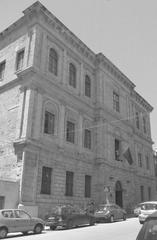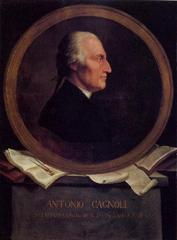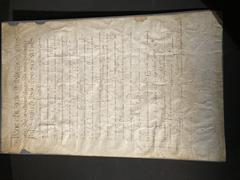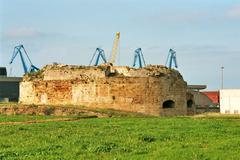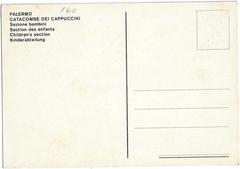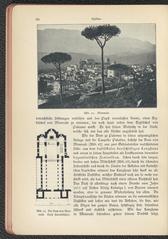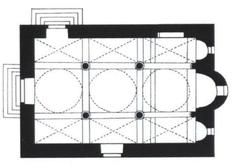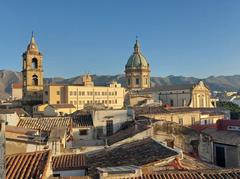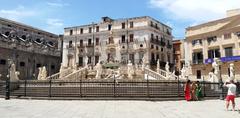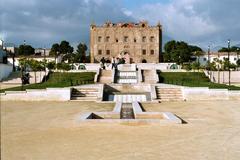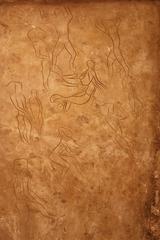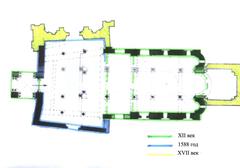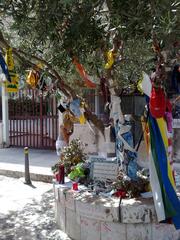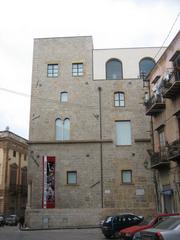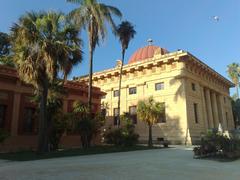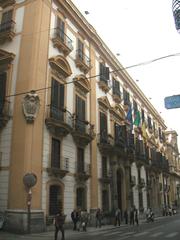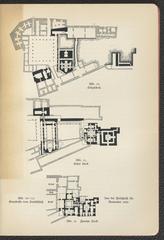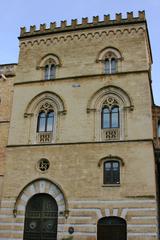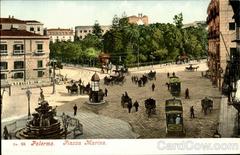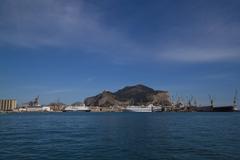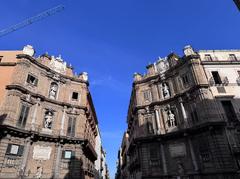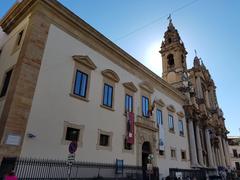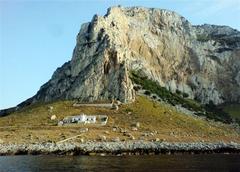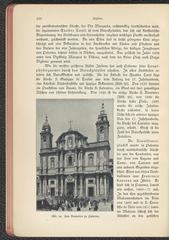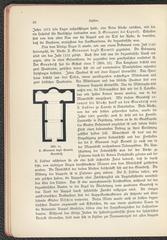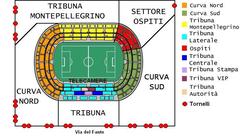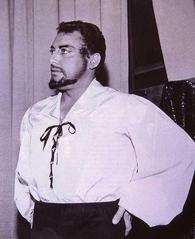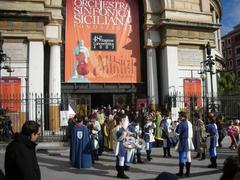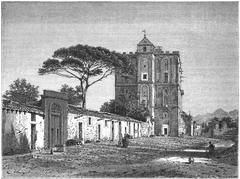Mare Memoria Viva Urban Ecomuseum Palermo: Visiting Hours, Tickets, and Complete Guide
Date: 14/06/2025
Introduction
Mare Memoria Viva (MMV), set along Palermo’s southeast coast in the historic Sant’Erasmo Locomotive Depot, stands as a pioneering urban ecomuseum dedicated to preserving and revitalizing the city’s maritime heritage, community memory, and environmental landscape. Far beyond the scope of a traditional museum, MMV operates as a living archive and a community-driven cultural institution—reclaiming public access to Palermo’s seafront, which had been compromised by decades of unchecked urban development known as the “Sacco di Palermo.” Established in 2014 by a coalition of educators, artists, and researchers, the ecomuseum embodies the philosophy of Hugues de Varine, emphasizing a pact between community and territory to foster stewardship, inclusivity, and active participation in heritage conservation (marememoriaviva.it; italiachecambia.org; palermoviva.it).
Table of Contents
- Discover Mare Memoria Viva: Origins and Mission
- Historical Context: The “Sacco di Palermo”
- The Ecomuseum Model and Community Involvement
- Visiting Hours and Ticketing
- Location, Access, and Accessibility
- What to See: Highlights, Tours, and Workshops
- Nearby Attractions
- Visitor Amenities and Practical Tips
- Frequently Asked Questions (FAQ)
- Digital Resources and Further Engagement
- Summary and Visitor Information
Discover Mare Memoria Viva: Origins and Mission
MMV was founded with the vision of reconnecting Palermo’s citizens with their coastline—an area that had become inaccessible due to post-war urban sprawl and illegal construction. Funded by Foundation CON IL SUD and the Municipality of Palermo, MMV’s participatory model brings together local families, artists, and researchers to co-create exhibitions and document the city’s relationship with the sea through oral histories, photographs, and creative storytelling (marememoriaviva.it).
Historical Context: The “Sacco di Palermo” and the Denied Sea
The “Sacco di Palermo” refers to the post-WWII period marked by unchecked construction, illegal building, and speculative urban development. This resulted in the physical and symbolic separation of residents from their waterfront, a rupture that MMV seeks to heal by archiving stories of fishermen, immigrants, shipyard workers, and local families—illuminating Palermo’s coastal transformation and resilience (italiachecambia.org).
The Ecomuseum Model and Community Involvement
Inspired by Hugues de Varine’s definition of the ecomuseum as a “pact by which a community commits to taking care of a territory,” MMV is a continuously evolving space, shaped by the contributions and memories of its community. Exhibits embrace oral histories, creative workshops, and artistic residencies, using multimedia and digital storytelling to ensure accessibility for all, including those with sensory or mobility impairments (palermoviva.it; marememoriaviva.it).
Visiting Hours and Ticketing
- Opening Days: Tuesday to Sunday
- Hours: 10:00 AM – 6:00 PM (last entry at 5:30 PM)
- Closed: Mondays and public holidays
- Admission: General entry is free; workshops, guided tours, and special exhibitions range from €3 to €8 (Isla Guru)
- Booking: Tickets for guided tours and events can be reserved online or purchased at the museum (marememoriaviva.it)
Please check the official website for seasonal changes or special event openings.
Location, Access, and Accessibility
- Address: Via Messina Marine 14, 90123 Palermo (Sant’Erasmo Locomotive Depot)
- Getting There: Easily accessible via city buses (lines 101, 102, 107), tram, and a 15–20 minute walk from Palermo Centrale Station. Limited parking is available nearby; public transport is recommended (Savoring Italy; Salt in Our Hair).
- Accessibility: The museum is fully wheelchair accessible, with ramps, elevators, accessible restrooms, and step-free entry. Tactile exhibits, audio guides, and high-contrast visual displays support visitors with sensory or cognitive needs.
- Nearby: The depot is just steps from the Oreto River mouth and close to the Foro Italico seafront, Zisa Castle, and the historic Kalsa district.
What to See: Highlights, Tours, and Workshops
- Exhibitions: Oral histories, photographs, videos, and artifacts contributed by local residents, documenting Palermo’s changing coastline and communities.
- Interactive Installations: Multimedia storytelling, soundscapes, and digital archives invite visitors to engage with the city’s maritime memory.
- Educational Programs: “Maredu’” and other initiatives partner with schools for environmental and civic engagement (marememoriaviva.it/maredu/).
- Workshops and Events: Creative workshops, community gardening, and festivals foster participation and celebrate Palermo’s heritage.
- Photography: The depot’s industrial architecture, Mediterranean gardens, and views of the Oreto River provide excellent photo opportunities.
Nearby Attractions
Combine your visit with:
- Palermo Cathedral
- Norman Palace
- Ballarò Market
- Foro Italico seafront
- Kalsa district’s historic streets and artisan shops
The museum is an ideal starting point for exploring Palermo’s rich urban and maritime landscape.
Visitor Amenities and Practical Tips
- Café: Enjoy local snacks and refreshments on-site.
- Wi-Fi: Free and available throughout the museum.
- Shop: Purchase local crafts and publications supporting community projects.
- Multilingual Support: Information panels in Italian and English; staff can assist international visitors.
- Dress Code: Modest attire is advised, especially during community or religious events.
- Safety: The area is generally safe during daylight; exercise standard caution at night.
- Photography: Permitted in most areas; please ask before photographing people.
Frequently Asked Questions (FAQ)
Q: Is entry to Mare Memoria Viva free?
A: General admission is free. Special activities may require a ticket.
Q: Are guided tours available?
A: Yes, in Italian and English; booking in advance is recommended.
Q: Is the museum accessible for people with disabilities?
A: Yes, with ramps, elevators, tactile exhibits, and accessible restrooms.
Q: How do I get there by public transport?
A: City buses and tram lines stop nearby; Palermo Centrale Station is a short walk away.
Q: Can I bring children?
A: Yes, the museum is family-friendly and offers educational workshops.
Q: Are there group or school programs?
A: Yes, group visits and school programs can be arranged in advance.
Digital Resources and Further Engagement
- Virtual Tours and Digital Archives: Explore online resources if you cannot visit in person (marememoriaviva.it).
- Audiala App: Download for interactive audio guides.
- Social Media: Follow for updates on exhibitions, events, and community initiatives.
- Volunteer or Donate: Support MMV’s mission through active involvement or contributions.
Summary and Visitor Information
Mare Memoria Viva is more than a museum—it is a living, participatory space that connects visitors with Palermo’s maritime heritage and urban memory through innovative exhibits, storytelling, and community engagement. Its accessible and inclusive environment, combined with its role in promoting sustainability and social cohesion, make it a must-visit for anyone interested in Palermo’s past, present, and future.
Plan your visit:
- Check marememoriaviva.it for current hours, ticketing, and events
- Book workshops or tours in advance
- Download the Audiala app for audio guides
- Follow MMV on social media for the latest updates
References and Further Reading
- Mare Memoria Viva Official Website (marememoriaviva.it)
- Ecomuseum Mare Memoria Viva in Palermo (italiachecambia.org)
- Urban Ecomuseum Palermo: Visiting Hours, Tickets, and Urban Renewal (futurehubs.eu)
- Urban Ecomuseum Palermo - Festivals and Neighborhood Events (Isla Guru)
- Savoring Italy - Palermo City Guide (Savoring Italy)
- Salt in Our Hair - Palermo Travel Tips (Salt in Our Hair)
